
JOURNAL OF THE AMERICAN HELICOPTER SOCIETY
Scope & Guideline
Innovating Solutions for Rotary-Wing Challenges.
Introduction
Aims and Scopes
- Rotorcraft Aerodynamics and Performance:
Research in this area explores the aerodynamic characteristics and performance metrics of various rotorcraft configurations, including helicopters, tiltrotors, and drones. Studies often utilize advanced computational fluid dynamics (CFD) and experimental validation to assess how design changes impact efficiency and flight capability. - Flight Control Systems and Technologies:
The journal covers advancements in flight control systems, including design, optimization, and innovative control methodologies aimed at enhancing safety and performance. This includes the application of machine learning and other modern techniques to improve pilot workload management and aircraft response. - Noise and Acoustic Studies:
Research addressing rotorcraft noise, including sources of noise and methods for its mitigation, is a significant focus. This encompasses both fundamental studies and practical applications, especially in the context of urban air mobility and public acceptance of rotorcraft operations. - Autonomous and Advanced Air Mobility Systems:
The journal highlights developments in autonomous flight technologies and their integration into rotorcraft systems, including urban air mobility (UAM) solutions. This includes research on obstacle detection, flight path optimization, and the impact of automation on operational safety. - Structural and Materials Engineering:
Research in this scope focuses on the structural integrity, materials, and design innovations for rotorcraft components. This includes studies on damage prediction, fatigue analysis, and the development of lightweight materials to enhance performance. - Environmental Impact and Sustainability:
The journal addresses the environmental aspects of rotorcraft operations, including noise pollution and emissions. Research in this area aims to develop sustainable technologies and practices that minimize the ecological footprint of rotorcraft.
Trending and Emerging
- Urban Air Mobility (UAM) Innovations:
Recent publications show a significant increase in research related to urban air mobility, focusing on the design, safety, and operational challenges of integrating rotorcraft into urban environments. This theme is crucial as cities explore aerial solutions for transportation and logistics. - Machine Learning and Data-Driven Approaches:
There is a growing trend towards utilizing machine learning and data-driven methodologies in rotorcraft research. This includes applications in flight control, performance optimization, and predictive maintenance, which enhance the operational capabilities of rotorcraft. - Noise Abatement Strategies:
Research focused on noise reduction techniques and technologies has gained prominence, particularly in the context of UAM. Studies are increasingly exploring innovative designs and materials aimed at achieving quieter rotorcraft operations. - Autonomous Flight Systems:
The development of autonomous flight systems for rotorcraft is an emerging focus area, with numerous studies exploring technologies for obstacle detection, autonomous navigation, and mission planning. This is critical for the future of both manned and unmanned rotorcraft. - Integration of Advanced Materials:
There is a noticeable increase in research investigating the use of advanced materials in rotorcraft design, particularly lightweight and composite materials that enhance performance while reducing weight and improving fuel efficiency.
Declining or Waning
- Traditional Helicopter Design:
As the focus shifts towards more advanced rotorcraft technologies, traditional helicopter design research has seen a decline. This includes studies that do not integrate modern computational techniques or innovative control systems. - Conventional Aerodynamic Analysis Techniques:
Research relying solely on classic aerodynamic analysis methods, without the incorporation of CFD or experimental validation, appears to be waning. The trend is moving towards more sophisticated, data-driven approaches that provide better insights into rotorcraft performance. - Static and Linear Control Systems:
There is a noticeable decrease in research focusing on static or linear control systems for rotorcraft. The field is increasingly favoring adaptive and nonlinear control methodologies that better address the complexities of modern flight dynamics. - Historical Retrospectives and Legacy Studies:
While historical perspectives have value, there has been a reduction in the publication of retrospective studies that do not contribute new insights or technologies. The emphasis is shifting towards forward-looking research that tackles current challenges in rotorcraft technology.
Similar Journals
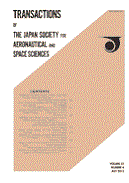
TRANSACTIONS OF THE JAPAN SOCIETY FOR AERONAUTICAL AND SPACE SCIENCES
Exploring the Frontiers of Aerospace InnovationTRANSACTIONS OF THE JAPAN SOCIETY FOR AERONAUTICAL AND SPACE SCIENCES is a distinguished journal published by the Japan Society for Aeronautical and Space Sciences, focusing on the latest advancements and research in the fields of aerospace engineering and space and planetary science. With a broad range covering theoretical studies, practical applications, and experimental research, this journal serves as a vital platform for researchers, professionals, and students keen to explore the intricacies of aeronautics and space technologies. Although currently closed to open access, the journal maintains a significant presence in the academic community, boasting a 2023 Scopus ranking of Q3 in both of its respective fields and offering insights that contribute to ongoing discussions and innovations in aerospace. Since its inception in 1969 and with publications extending to 2024, the journal not only reflects the evolving landscape of aeronautics and space sciences but also encourages discourse that paves the way for future breakthroughs. For your engagement and contributions to this dynamic field, the TRANSACTIONS OF THE JAPAN SOCIETY FOR AERONAUTICAL AND SPACE SCIENCES stands as an essential resource.
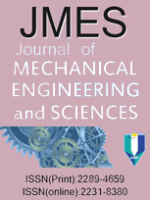
Journal of Mechanical Engineering and Sciences
Advancing the Frontiers of Mechanical EngineeringThe Journal of Mechanical Engineering and Sciences (ISSN: 2289-4659, E-ISSN: 2231-8380), published by UNIV MALAYSIA PAHANG, is a prominent open access journal established in 2011, dedicated to advancing the field of mechanical engineering and associated sciences. Covering a wide array of topics from industrial manufacturing processes to computational mechanics, the journal serves as a vital platform for researchers, professionals, and students to disseminate innovative findings and methodologies. With impressive Scopus rankings, including a place in the 60th percentile for Industrial and Manufacturing Engineering, the journal holds a significant position among its peers, facilitating global academic discourse. Located in Kuantan, Pahang, Malaysia, the journal emphasizes accessibility and collaboration within the engineering community, encouraging submissions that contribute to both theoretical and applied aspects of mechanical engineering.

International Journal of Turbomachinery Propulsion and Power
Empowering innovation in energy systems and propulsion technology.The International Journal of Turbomachinery Propulsion and Power, published by MDPI, is a pivotal scholarly platform devoted to advancing the field of turbomachinery, propulsion technology, and power systems. Since its inception in 2016, this open-access journal has provided an invaluable resource for researchers, professionals, and students within the realms of Aerospace Engineering, Energy Engineering, and Mechanical Engineering. With its current ranking in the Q3 category across these disciplines and its strategic placement in Scopus, the journal facilitates the dissemination of cutting-edge research findings and innovative solutions. The commitment to open access, effective from 2017, ensures that high-quality research is readily accessible, fostering collaboration and knowledge sharing in the global academic community. As it continues to expand its scope through 2024, the journal remains a crucial avenue for discussion, experimentation, and advancement in turbomachinery and energy-related studies.
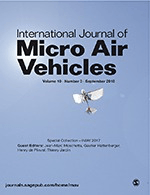
International Journal of Micro Air Vehicles
Innovating the Skies: Research that Takes FlightThe International Journal of Micro Air Vehicles, published by SAGE Publications Ltd, stands as a pioneering platform for cutting-edge research in the rapidly evolving field of micro air vehicle (MAV) technology. With an ISSN of 1756-8293 and an E-ISSN of 1756-8307, this journal caters to a diverse readership, including aerospace engineers, researchers, and industry professionals who are at the forefront of innovation in aerospace engineering. It holds a commendable position within the Q3 category of Aerospace Engineering for 2023 and is ranked 65th out of 153 in Scopus, placing it in the 57th percentile among its peers. As a vital resource since its inception in 2010, the journal emphasizes advancements in design, performance, and applications of MAVs, while facilitating knowledge sharing and collaboration across disciplines. Although it operates on a subscription model, the journal ensures accessibility of pivotal research findings for professionals and scholars alike, aiming to shape the future of aerospace applications through rigorous academic inquiry.

Journal of Aeronautics Astronautics and Aviation
Innovating the Future of Flight and Space ExplorationJournal of Aeronautics Astronautics and Aviation, published by the Aeronautical & Astronautical Society Republic of China, is a premier scholarly journal dedicated to advancing knowledge in the dynamic fields of aerospace engineering and space sciences. Operating under the ISSN 1990-7710, this journal plays a pivotal role in disseminating innovative research and practice-oriented studies that address both theoretical and applicative aspects of aeronautics and astronautics. With an impressive history spanning from 2006 to 2024, the journal has established itself as a valuable resource for researchers, professionals, and students alike, featuring contributions that reflect the latest developments and trends within the industry. In the latest rankings, it holds a Q3 classification in Aerospace Engineering and Q4 in Space and Planetary Science, indicating its growing influence despite its niche scope. With an open access model that facilitates widespread readership, the Journal of Aeronautics Astronautics and Aviation strives to foster collaboration and knowledge sharing in these ever-evolving scientific domains.
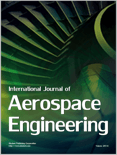
International Journal of Aerospace Engineering
Unlocking Potential in Aerospace EngineeringThe International Journal of Aerospace Engineering, published by HINDAWI LTD, stands at the forefront of innovation and research in the field of aerospace engineering. With an impact factor reflecting its contributions to the discipline and classified in Quartile 3 (Q3) for the year 2023, this journal provides a platform for high-quality, peer-reviewed articles that delve into advancements and challenges in aerospace technology and applications. Since its inception in 2008, the journal has embraced an Open Access model, promoting unrestricted dissemination of research findings to foster collaboration and knowledge sharing among researchers, professionals, and academia. The journal covers a broad spectrum of topics, aiming to enhance understanding and give insight into aerospace engineering's multifaceted aspects. With its coverage in the Scopus database, ranking 71 out of 153 in the aerospace engineering category, the journal is a valuable resource for those engaged in this dynamic field, ensuring that high-impact research receives the visibility it deserves.

International Journal of Aeronautical and Space Sciences
Advancing the Frontiers of Aerospace ResearchThe International Journal of Aeronautical and Space Sciences, published by Springer, is a prominent platform dedicated to advancing research and innovation in the fields of Aerospace Engineering, Control and Systems Engineering, Electrical and Electronic Engineering, and Materials Science. With an ISSN of 2093-274X and an E-ISSN of 2093-2480, the journal has established itself as a vital resource since its inception in 2011, currently offering insights that span a wide range of contemporary challenges and technological advancements in aeronautics and space exploration. Ranking in the Q2 category across multiple disciplines, including Aerospace and Control Engineering, signifies its recognized impact and quality within the academic community. Although not an open-access journal, it remains accessible to researchers, professionals, and students seeking to enhance their understanding of complex aerospace systems and their applications. The journal’s commitment to publishing high-quality research makes it indispensable for those aiming to contribute to, or stay informed about, the evolving landscape of aerospace technology.
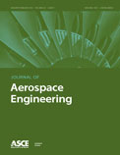
JOURNAL OF AEROSPACE ENGINEERING
Fostering collaboration for breakthroughs in aerospace engineering.JOURNAL OF AEROSPACE ENGINEERING, published by the American Society of Civil Engineers (ASCE), is a premier scholarly journal that serves as an essential resource for engineers and researchers in the aerospace engineering domain. With an ISSN of 0893-1321 and an E-ISSN of 1943-5525, this journal has been dedicated to advancing knowledge since its inception in 1988 and will continue to do so through to 2024. The journal is categorized in the Q2 quartile across multiple engineering disciplines, including Aerospace Engineering, Civil and Structural Engineering, Materials Science, and Mechanical Engineering, reflecting its reputable standing in the community. The impact factor speaks to its influence and relevance, making it a critical reference for ongoing research and innovations. Although this journal does not offer open access, it ensures that its content is comprehensive, engaging, and peer-reviewed, targeting a diverse audience of professionals, academics, and students involved in the fields of aerospace engineering and related disciplines. The journal actively contributes to shaping future engineering practices, showcasing cutting-edge research and fostering collaboration among discipline experts.
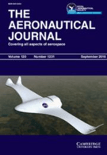
AERONAUTICAL JOURNAL
Fueling the evolution of aerospace advancements.Aeronautical Journal, published by Cambridge University Press, is a premier scholarly journal dedicated to advancing the field of aerospace engineering. With a notable impact factor, this journal holds a strong position in the academic community, ranked #53 out of 153 in the Scopus category of Aerospace Engineering, placing it in the 65th percentile. The journal has been providing a platform for groundbreaking research since its inception in 1969, and continues to be a vital resource for researchers, professionals, and students involved in aeronautics. As a Q2 journal in the 2023 Aerospace Engineering category, it offers high-quality articles that cover a range of topics within the discipline, contributing to the ongoing discourse and innovation in aerospace technologies. Although not an open-access journal, it remains accessible to a vast readership through institutional subscriptions and partnerships. The Aeronautical Journal is a crucial publication for those seeking to stay at the forefront of aerospace research and development.

AIAA JOURNAL
Exploring the Frontiers of Flight and Space TechnologyAIAA JOURNAL, published by the American Institute of Aeronautics and Astronautics, stands as a premier peer-reviewed platform for cutting-edge research in the field of aerospace engineering. With an esteemed Q1 classification in the Aerospace Engineering category and a notable rank within the top 20% of its field according to Scopus, this journal has become an essential resource for researchers, professionals, and students alike. Spanning over six decades of impactful scholarship from 1963 to 2024, the AIAA JOURNAL contributes significantly to the advancement of aerospace technologies and methodologies. While it does not offer open access, its rigorous editorial standards and impactful articles ensure that it remains a vital source for those seeking to stay at the forefront of aerospace innovation. Explore the rich tradition of excellence and stay informed on the latest discoveries that shape the world of flight and space exploration.